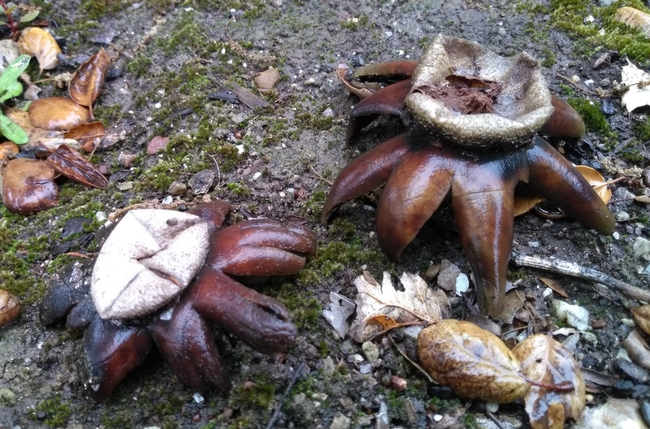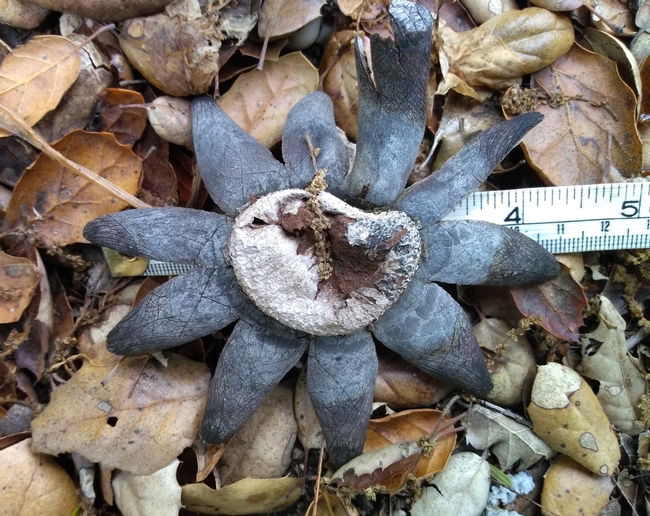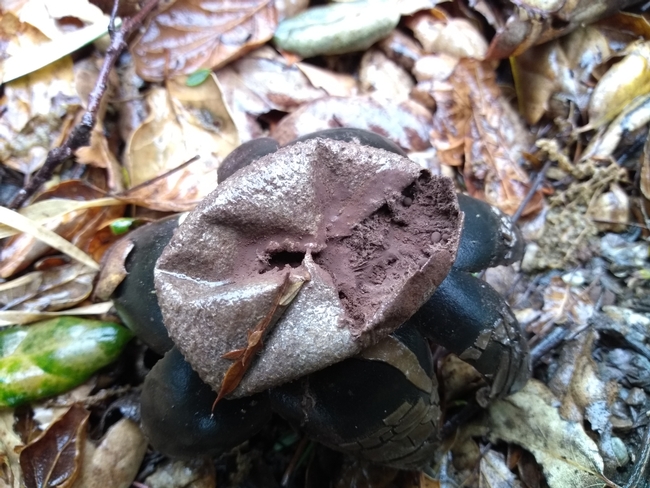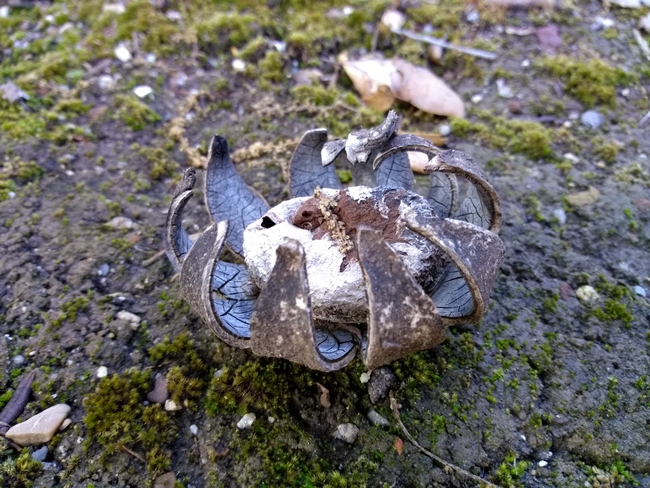In this weekly blog, Dr. Annemiek Schilder, Director, UCCE Ventura County and Hansen Agricultural Research and Extension Center, shares her observations about the natural world across the seasons. As she says:
"Gently observing your surroundings with curiosity will teach you some amazing things. There are so many fascinating things happening under our noses, only wanting for an observant eye."
Tis the time for mushrooms.
No, I am not talking about the Portobellos in your pasta dish. I am talking about the fungal denizens of our environment. Mushrooms are the fruiting bodies of fungi that grow on leaf litter, wood pieces or plant roots. Mushrooms contain spores, which are in essence the seeds of the fungus. Most spores fall to the ground or are carried by the wind to other locations where they start new colonies. If you took an air sample and looked under the microscope, you'd find dust and pollen, as well as fungal spores.
Fungi - which are also called molds - need moisture. That is why they love to grow in your shower stall and on fabrics in damp locations. The body of a fungus is made up of threads that grow over and into surfaces, such as a piece of bread or those strawberries you forgot in the refrigerator. Sometimes when I retrieve a fuzzy gray item from the back of my fridge I can only guess what it used to be by its shape. And even then I may not be entirely sure. I have had multiple such “experiments”.
Fungi are the janitors of nature – they eat up old leaves, vegetables and fruits. Some fungi also attack living plants, causing the plants to become diseased.
Two false earthstars after the rain. Photo Credit: Annemiek Schilder.
After a recent rainy spell, I was surprised and elated to see various types of mushrooms, including Astraeus hygrometricus, the false earth star or barometer earth star. Astraeus is Greek for “Starry one” and hygrometricus means “water measuring”. The name indicates that they can sense the amount of moisture in the air.
Size of this false earth star is 4 inches. Photo Credit: Annemiek Schilder.
Earthstars are really puffballs full of spores with a thick skin that breaks open like a star. The arms of the star bend downward under moist conditions to push the puffball upwards so that the wind can catch the spores as they are released. Raindrops falling on the puffball force the spores out in puffs. With the naked eye, the spores look like cocoa powder but under the microscope they appear like tiny burnt coconut macaroons. Each spore can grow a new fungal colony with sufficient moisture, appropriate temperature and a food source.
Brown powdery spores visible in the broken puffball. Photo Credit: Annemiek Schilder.
False earthstars are mycorrhizal, which means that they are associated with the roots of plants, in this case oaks. The fungal threads act like an extension of the oak root system, bringing essential nutrients like phosphorus and nitrogen to the plant, while the plant donates food, i.e. carbohydrates, to the fungus. It's a natural tit for tat that benefits both the tree and the fungus. Many plants have mycorrhizal fungi in their roots, which may also protect them from attack by certain pathogens and insects.
The very next day when the weather cleared, I was able to observe the earthstar responding to a drop in relative humidity: the star's arms started to curl back up around the puffball, so cute!
False earth star arms starting to curl up in dry weather. Photo Credit: Annemiek Schilder.
Related Reading: Eat or Be Eaten



